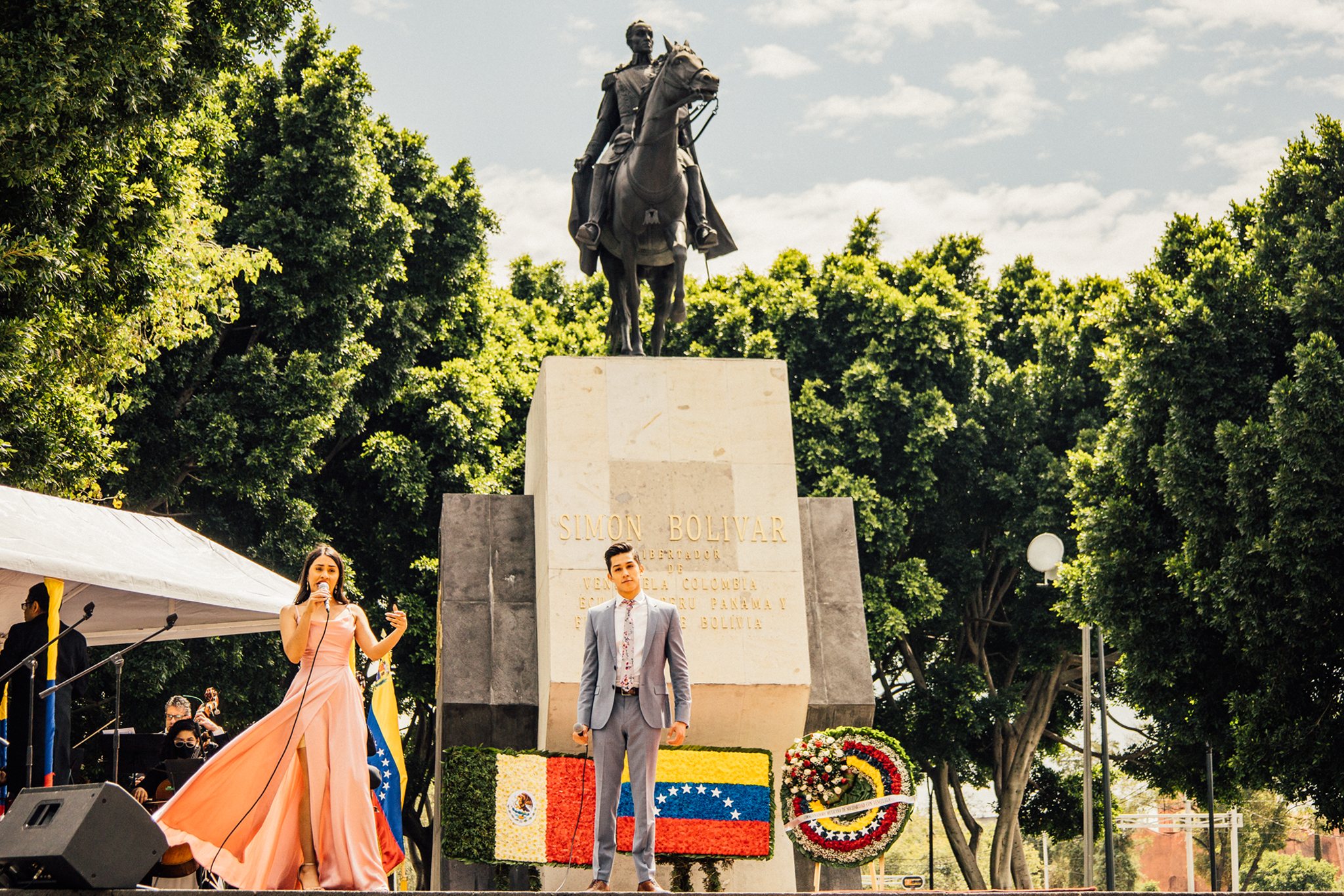The Expanding US Monroe Doctrine
A sixth-grade teacher introduced Teri Mattson to pre-Spanish cultures in what is now Mexico and Central America. That inspired 40+ years of travel in that region. As a human rights activist, she participated in political and social justice delegations to Argentina, Colombia, Cuba, Ecuador, Guatemala, Haiti, Honduras, Mexico, Nicaragua, Peru, and Venezuela. In 2021 alone, Teri served as an accredited international election observer in Ecuador, Honduras, Mexico, and Venezuela. Teri hosts and produces the podcast and YouTube program, WTF is Going on in Latin America & the Caribbean.
Spain first defeated and colonized the Indigenous civilizations of Latin America in the 1500s. When the US became a nation in 1776, what was their stance toward Latin America?
From the beginning, the US plotted to acquire the vast areas south and west of its borders. In 1786 Thomas Jefferson was asked why the US shouldn’t help the Spanish colonies gain their own independence. He replied by letter that he saw Spain’s rule as a holding action until the day the US was big and powerful enough to populate it and “gain it from (Spain) piece by piece.”
After roughly 50 years, the US saw its chance. Mexico freed itself from Spanish rule in 1821 — and the US quickly established its political and economic dominance over the new nation. Two years later President James Monroe announced the Monroe Doctrine.
Monroe said the US would safeguard newly independent Latin American countries from foreign meddling. They would halt the Spanish coming up from the south and Russian expansion coming down from the north along what was then Mexico’s Pacific Coast. Russia owned Alaska, and it had already expanded its fur trade all the way down to what today is Sonoma County.
So, allegedly, the intent of the Monroe Doctrine was to keep foreign powers out of this hemisphere, not about the right of the US to intervene in Latin American affairs?
Allegedly! But the Monroe Doctrine was just step one. The many corollaries added over the years demonstrate the Doctrine’s true intent.
The Hayes Corollary of 1878 was added first. European powers were talking about building a canal through Nicaragua, but the US didn’t want European ships to acquire a trade advantage. They wanted Colombia to permit the US to build a canal through Panama, which was then part of Colombia. When Colombia balked, the US aided and abetted a successful independence movement in Panama. The Panama Canal was built, and the US got control of a key international trade route.
In 1885 the Olney Corollary stated that the US could intervene in any dispute between a Latin American country and a foreign power. The British owned Guyana which neighbored Venezuela, and both countries laid claim to territory between them. The US stepped in and forced Britain to agree to the US as arbiter.
The US resolved the dispute in the name of Venezuela, but not for Venezuela — all US decisions were about what was best for US capitalists. The recent conflict between Venezuela and Guyana over the oil-rich Essequibo region has roots in that US-designed Treaty.
In 1902 the Roosevelt Corollary said that the US has the right to intervene in the internal affairs of a Latin American country if it failed to pay its debts. And in 1912, the Lodge Corollary proclaimed that the US had a right to intervene even in matters involving private interests, not just national governments. Mexico was planning to sell Magdalena Bay to private Japanese interests; the US stepped in and stopped the sale.
In the 20th century, the US intervened repeatedly. Between 1962 and 1968 alone, it played a role in 14 coup d’états in Latin America. When military interventions become less acceptable after Vietnam and Chile, the tool of economic sanctions was invented. NGO’s also play a role — under the guise of “humanitarian” aid, many dollars have been channeled to pro-US organizations and against democratically elected governments. This is happening in Mexico today.

In opposition to the Monroe Doctrine, Simón Bolívar had a different vision for the hemisphere, right?
Venezuelan Simón Bolívar’s original mission was to liberate Latin America from Spanish rule. Between 1810 and 1825 he led the revolutions that established Venezuela, Panama, New Granada, Ecuador, Peru, and Bolivia as independent countries. No wonder he is revered across Latin America. There are more statues of Bolívar than of anyone else in the world!
After liberation from Spain, the Bolivarian vision proposed a united bloc of independent Latin America nations against US dominance. The goal was to establish equilibrium between equal sovereign nations to achieve sustainable peace. Haiti was the first nation in Latin America to gain independence in 1804, and it financed Bolívar’s armies — there would be no slavery in the new Latin American republics.
In 1826, Bolívar organized the Panama Congress. On its agenda was denunciation of Spanish imperialism, independence for the Spanish colonies of Puerto Rico, Cuba, the Canary Islands, and the Philippines.
Unfortunately, the US was invited, and it didn’t agree with the demands. Moreover, they refused to participate if Haiti were invited — Southern slaveholders were panicked, fearing their own slaves would take power as they had in Haiti. In capitulation to the US, Haiti was dis-invited. The Monroe Doctrine has been firmly in place ever since.
Did Mexico’s presidents support the Bolivarian vision?
Many of the PRI governments did the bidding of the US and allowed the exploitation of Mexican natural and labor resources in exchange for the personal gain of the presidents and top officials.
In contrast, the current Mexican president Lopez Obrador has invoked Bolívar on several occasions. As president of CELAC, the Community of Latin American and Caribbean States, AMLO commemorated Bolívar’s birth last July. He spoke openly about the history of US “overt or covert operations against independent countries south of the Rio Grande.”
Under his leadership, the September 2021 CELAC Summit laid out some fundamentals: abolish the OAS and create a new institution, without the inclusion of the US. The new alliance would accept the differences among themselves in regard to domestic politics — the goal was to align with one another and function internationally as their own united economic bloc, without having to choose between US or China.
Can the Monroe Doctrine finally be buried?
If we review the many Presidential and legislative elections in Latin America from October 2020 (Bolivia) through November 2023 (Argentina), the people of most nations voted for national sovereignty, natural resource sovereignty, and governments that proposed economic plans benefitting the majority of citizens. As an election observer in Bolivia, Nicaragua, Ecuador, Venezuela, Chile, and Mexico, I’ve witnessed the people reject the Monroe Doctrine.
But while the Mexican people and their president want sovereignty, they also share a 1900-mile border with the US. They are the US’s biggest trading partner. The Monroe Doctrine won’t be buried until the people of the US demand a change in foreign policy.
This is a key task for the US left. If we want sustainable peace across the hemisphere, the Bolivarian principles of equality and respect must replace dominance and disdain.

